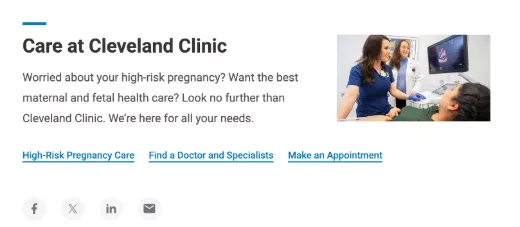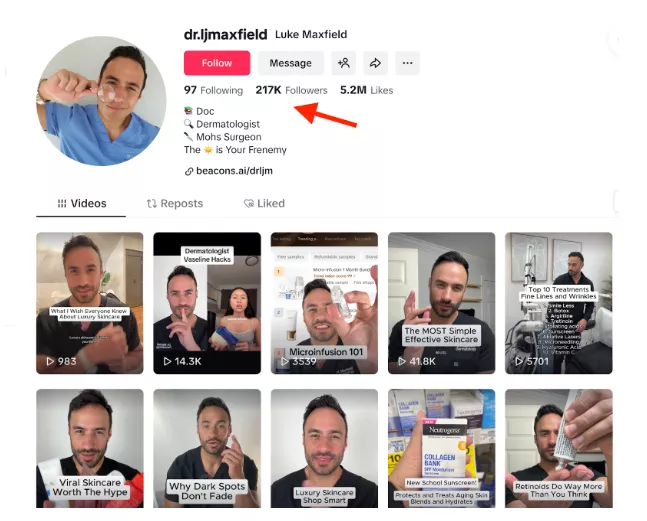Get clear about your goals, understand your patients, choose the right digital channels, and then launch, track, and improve everything as you go — that’s the way to plan your healthcare marketing strategy.
You need to know how patients behave in 2025 to turn these habits into business results. People like to compare reviews about doctors and google symptoms at midnight? Okay, then we’ll have 5 stars on the Google Business account and content hub with information on various diseases!
In this article, we’ll break down how to create a healthcare digital plan that brings your business some kind of online dominance, and more importantly, a steady flow of patients walking through your doors.
What is Healthcare Digital Marketing Strategy?
It is a clear plan that involves writing down how your clinic will attract, convert, and retain patients using the right goals and digital channels in the healthcare industry. Behind the scenes, strategy helps you do smart homework:
-
Analyze the market
-
Define your target audience
-
Set measurable goals
-
Craft a UVP that makes your clinic stand out from the crowd
Your healthcare marketing strategy is about deciding where you show up — website, Google search, socials, email, paid ads — and how you present your clinic online so patients instantly think, “Oh, these folks will take care of me and my family.”
What’s new in healthcare digital marketing?
AI-powered personalization, chatbots, telehealth, and even AR/VR experiences are now the cool kids in the marketing for healthcare.
|
How It Works |
||
|
1. |
AI personalization |
AI is a top-tier people pleaser. It can analyze patterns in patient behavior — like past appointments, common symptoms, and engagement with your website or emails — to predict what patients might need next. |
|
2. |
AI chatbots and virtual assistants |
They are never sleeping. They are booking appointments, answering routine questions, and basically doing everything except wearing a white coat. |
|
3. |
Telemedicine and mHealth apps |
It’s a lifeline for rural and underserved communities. They help with remote monitoring, booking, and patient engagement. |
|
4. |
AR and VR |
Clinics now offer virtual procedure tours and fun interactive anatomy lessons. They make learning about health feel way easier. |
Why Your Business Needs a Healthcare Digital Marketing Strategy?
Because your business needs a clear plan for attracting and retaining patients online. Your ads and content have to be on people’s smartphones and laptops, because:
-
About 65% of patients search online before contacting a doctor.
-
Over 70% of patients in the U.S. read online reviews before making an appointment.
-
Digital dominates in healthcare marketing: over 72% of ad budgets are spent online, and money spent is growing ~10% YoY.
If potential patients can't find you online to check your reviews before making an appointment, they'll go to your competitors instead.
What are examples of successful healthcare marketing campaigns in 2025?
Cleveland Clinic's SEO dominance and Aspire Dermatology’s social media success are two perfect sources of inspiration for digital marketing in healthcare industry.
Cleveland Clinic SEO Strategy
The clinic created a giant Health Library covering every medical term you can think of. They put some SEO magic in their articles, so when someone Googles “pregnancy after 35,” they show up right at the top.
Their content is nicely written, people read it all the way through, and sometimes book an appointment directly from it. It's SEO and content marketing in one bottle!
Results: Their article on advanced maternal age has around 17,800 visits per month. And that's just one piece!
Netpeak US, a full-cycle digital marketing agency, is an expert in SEO, too. We helped CSD Lab strengthen its SEO strategy. The outcome? A 71.56% increase in organic traffic year over year and a 50% jump in market healthcare business share from non-branded searches.
If you’d like to plan healthcare marketing and want some help, just give us a call!
Aspire Dermatology SMM Strategy
The clinic’s co-founder, Dr. Luce Maxfield, has an impressive 217k followers on TikTok, 303k on Instagram, and co-runs the YouTube channel Doctorly with 3.46M subscribers.
He talks about skincare myths, answers patient questions, and recommends morning routines that make your skin glow.
People already see him as their dermatologist, so when a real skin problem comes up, they book an appointment with Aspire Dermatology.
What are Possible Digital Channels for Healthcare Marketing Strategies?
From your website and PPC, to email, retention, and SERM — these are the digital channels that often do the heavy lifting for healthcare marketing.
Website
Your website is like Rome — all roads lead there. It’s the ultimate destination for all your marketing efforts, so when potential patients arrive there, they'd better see a modern design with large, clickable buttons and easy navigation. This is the moment when they decide whether to trust you with their health.
Why it’s important: 53% of mobile users leave a website if it takes more than 3 seconds to load. Poor design and content drive 38% of visitors away.
Generative Engine Optimization (GEO)
People don't just Google their symptoms now; they’re asking AI assistants what’s wrong with them, what to do, and which clinic to choose. So, you need to optimize your content for AI-powered searches.
Why it’s important: Over 70% of consumers use AI for choosing services — yes, even healthcare.
PPC (Pay-Per-Click Advertising)
With healthcare PPC marketing, you can reach patients exactly when they’re searching for care. People type in phrases like “orthodontist Brooklyn” or “acne specialist near me,” and there you are: on Google, on social media, on websites!
Healthcare PPC is the quickest way to have traffic and new patient leads — but not the cheapest one. In 2025, general healthcare clicks cost $3–$6, but high-intent services like dental care cost around $7.85 per click.
Why it’s important: 84% of brands see positive PPC results, and healthcare is no exception.
Email & Retention Marketing for Healthcare
Email feels reliable, so when people see reminders, health tips, and personalized offers from you in their inboxes, 41% of them read the letter. Email is a great way to stay in touch with current clients and anyone on your newsletter list. And it's especially useful for retaining former patients.
Why it’s important: Email marketing delivers an ROI of around US$42 for every US$1 spent.
SERM (Search Engine Reputation Management)
In the digital world, you must earn people's trust before they will make an appointment. Without good reviews and ratings, people won't even look at your website or prices.
Take creating your online reputation seriously; nobody wants to treat their heart disease by a 3-star doctor.
Why it’s important: About 75% of patients read reviews before choosing a new provider, and 85% trust those reviews just as much as recommendations from friends or family.
At Netpeak, a full-cycle digital marketing agency, we are experts in using digital channels. If you need help with a healthcare marketing strategy, give us a call!
How to Build a Healthcare Marketing Strategy Step-by-Step?
Analyze your market, define your target audience, set clear goals, and shape a strong value proposition. Then make sure your website is convertible, roll out your digital channels, and track performance.
But don’t be scared. How do you eat an elephant? One bite at a time.
Step 1: Analyzing and Planning
Around 78% of healthcare providers collect analytics to improve their marketing. So, you need to collect data and use it for good.
-
Find out your competitors — their services, prices, and patient reviews.
-
Choose your unique value proposition (UVP). Maybe you’re a same-day emergency dentist, open till 10 PM? Or a dermatology clinic focused on acne in young adults? What makes you different from others?
-
Learn who your potential clients are. It could be moms 30–45, high-income implant patients, chronic disease patients, etc. Keep them in mind while creating ads.
-
Check which of your services are popular enough to promote. The easiest way — use search volume data for searches, such as “dental implants near me.” If there are a lot of searches, then there is a big demand.
-
Use clear KPI’s to hit. For example, +20 new Invisalign cases for the month or +200 email subscribers for the quarter.
How to set realistic marketing KPIs for healthcare?
Search for healthcare benchmarks in 2025: cost per click (CPC), conversion rates, patient value, etc. Then, monitor your results and change your KPIs based on reality.
Step 2: Execute Your Strategy
Now it’s time to bring your plan to life! Don't worry about making everything perfect — just get to work.
-
Turn the strategy into campaigns and tasks with owners, timelines, and a simple quarterly roadmap: what gets launched, tested, improved, etc. Useful tools: Trello, Asana, Notion.
-
Launch a fast, mobile-first website with easy navigation. About 60–65% of patients check a clinic’s website or search online before contacting a provider.
-
72% of internet users search for health-related information online – your content needs to answer their questions.
-
In 2025, 77% of patients rely on search engines before booking, and local SEO is the go-to powerhouse for medical practices.
-
Social media affects people’s choice of doctor or clinic; in recent studies, over 40% of people look up doctors on Instagram/X before choosing.
-
Keep in touch with patients via email to make them stick around. Email ROI is up to $36 per $1 spent across industries, and global email marketing revenue is still growing each year.
-
Ask happy patients to leave reviews through SMS or email and reply to every one. When negative feedback comes in, be professional.
Step 3: Track and optimize
It’s time to monitor your numbers and improve your healthcare marketing strategy. Over time, it will become the best version of itself.
-
Set up analytics and call/lead tracking. Monitor cost per lead, cost per new patient, show rate, revenue per patient, channel ROI, and everything you decide is important. Useful tools: Looker Studio, Marmind, SimpleKPI.
-
Keep improving what works and fixing what doesn't. Do better next time.
-
Ensure compliance. All your marketing activities should be aligned with healthcare regulations (HIPAA/GDPR, local law, and platform policies).
How can I check if my website is HIPAA compliant right now?
Check if your site uses HTTPS, encrypts all patient data, and avoids collecting Protected Health Information (PHI) without proper safeguards. And all your forms, chat tools, booking widgets, and third-party integrations should offer HIPAA-compliant versions.
Pro Tips to Succeed in Healthcare Marketing Strategy in 2025
Below are some practical pro tips specifically for healthcare marketers.
|
Why It Works |
||
|
1. |
Use “Patient Language” |
Patients don’t search “mandibular third molar extraction.” It’s more “wisdom tooth removal cost” or “swollen gum hurts when I chew.” |
|
2. |
Make Your Doctors the Face of Your Brand |
Make your specialists stars of short videos, landing pages, Q&A reels, etc. Real people’s faces create trust. |
|
3. |
Build Retargeting Everywhere |
Patients rarely book on the first try. They think, fear, and compare. Use retargeting on Facebook, Instagram, the Google Display Network, and email to ask them to come back. Retargeting reduces cost per patient by 40-60%. |
|
4. |
Create “Hero” Landing Pages |
Turn your main services into landing pages. In the average medical services sector, they convert 6.5% patients, but physicians & surgeons convert around 16.13%. |
What Are Common Mistakes to Avoid in Healthcare Marketing Strategy?
Slow follow-up on leads, overspending on PPC while ignoring reputation, trying to be everywhere at once, and copying competitors instead of standing out — these are some of the most costly marketing mistakes healthcare clinics make.
-
It takes most clinics hours to respond, which is deadly in healthcare. Clinics lose 40-60% of leads because they respond too slowly. You can’t afford that. Use automated SMS, AI chat widgets, and reminders to act faster. Reply within two to five minutes, not two to five hours.
-
Even all the paid clicks in the world don’t save you if your reviews are weak. Patients would click and go away.
-
You don't need to be a star on every platform. Use the platforms that are most effective for your audience.
-
Don’t copy competitors blindly, even successful ones. Their strategies may not fit your strengths, so you end up wasting budget.
What is the best way to assess competitors in healthcare marketing?
Review their online presence — website, Google rankings, reviews, and social media. Focus on what they do well, where they fall short, and how your clinic can offer something clearly better or more unique.
FAQ
What is a healthcare marketing plan?
A healthcare marketing plan is a structured roadmap that outlines how a clinic, hospital, or medical practice will attract, convert, and retain patients.
It includes goals, target audiences, channels (SEO, PPC, social, email), budgets, timelines, and KPIs.
What is the role of a healthcare marketing strategy?
A healthcare marketing strategy defines the why and how behind your marketing. It sets the long-term direction that guides decisions, ensures consistent messaging, and prioritizes the channels that bring the best ROI.
What are the key elements of healthcare marketing?
The core elements include: market research, patient insights,
clear value proposition, website, SEO, content, social media, PPC ads, reputation management, tracking & analytics.
What makes healthcare marketing different from other industries?
Healthcare marketing is unique because it relies heavily on trust, accuracy, ethics, and compliance. You’re not selling products — you’re influencing sensitive decisions that involve health, safety, and emotions. Healthcare marketing must be more educational, more transparent, and more human-centered than typical commercial marketing.
Related Articles
Your Beauty Ad Playbook: 7 Examples for Inspiration
Let's unpack what's in vogue for beauty advertisement in 2026 and why your e-commerce business should learn from industry-leading beauty ad examples.
Segments vs. Audiences in Google Analytics 4: A Comprehensive Setup Guide
You will learn how to correctly set up custom audiences, allowing you to save time and gain insight into your audience
PPC for E-commerce: How to Buy Attention Without Going Broke
Learn how PPC for e-commerce can drive fast sales for your store without draining your budget. Smart strategies, beginner tips, and proven ways to scale profitably.






